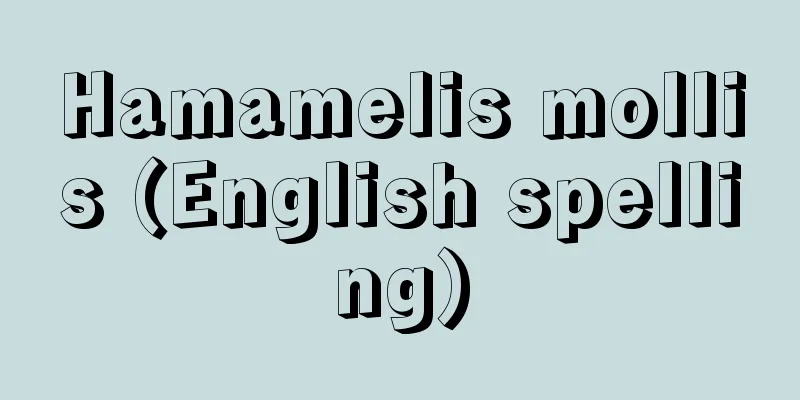Lyon (English spelling)

|
It is the central city of the Lyonnais region in central-eastern France, and the capital of the Rhône department. It is located 462 km southeast of Paris, at the confluence of the Rhône River and its tributary, the Saône River. With a population of 445,452 (1999), it is the third largest city in France after the capital Paris and Marseille. It also forms a metropolitan area with neighboring cities such as Villeurbanne and Vénissieux. In addition to being the seat of various government offices, it is also home to courts, higher education institutions such as universities and various technical schools, a military district, and an archbishop, making it the administrative, judicial, educational, military, and religious center of the Lyonnais region. There are also many financial institutions such as banks, a stock exchange, and an international trade fair is held every April, making it a lively commercial city. Furthermore, it is one of the country's leading industrial cities, with a variety of industries, including machinery and metals, automobiles, electronics, oil refining, chemicals, and textiles, mainly located in the suburbs. The silk weaving industry, which developed in the 18th century, is particularly famous. In 1801, the population was just over 100,000, but in the 19th century it grew rapidly, reaching nearly 500,000 before World War I. However, the population stagnated due to the small size of the city (50 square kilometers) and the fact that most of the city was urbanized. Conversely, the population of the suburbs increased dramatically from just over 150,000 in 1914, and the urban area expanded especially on the east side of the Rhône River. Lyon's ancient prosperity was largely due to its geographical location, and the Fourvière hill, 100 meters high at the confluence of the Saône and Rhône rivers, served as a defensive point for the relay base between the Mediterranean and northwestern Europe. The Lyon metropolitan area developed with the realization of the subway and easy connections to other regions by rail, highway, air, and river transport. There are many historical monuments and buildings in the city. Roman ruins, such as an open-air theater, remain on Fourvière Hill, and the Gallo-Roman Museum is located there. Notre-Dame de Fourvière Cathedral (19th century) stands on the hill. The old Lyon district between the hill and the Saône River has beautiful streetscapes, with many Gothic and Renaissance buildings, including the Lyon History Museum, the Marionette Museum, and the Romanesque and Gothic Saint-Jean Cathedral (12th-15th century). Between the Saône River and the Rhône River, there is the Bartholdi Fountain, the city hall, and the Museum of Fine Arts around Place des Terreaux. Other attractions include the Romanesque Saint-Martin-d'Ainées Basilica, the 15th-century Saint-Nigé Church, the Saint-Bonaventure Church, the Textile History Museum, the Museum of Decorative Arts, and the Guimet Museum. [Yukihiko Otake] historyIn the middle of the 1st century BC, the Romans established a colony here, which was called Lugdunum. Located at a strategic point along the way, it flourished as a commercial city and as an administrative center governing Gaul. At the end of the 2nd century AD, Emperor Septimius Severus destroyed Lyon for siding with his enemy Albinus, and the city fell into decline, but regained its vitality as a bishopric under the Carolingian dynasty. In 1032, it became part of the Holy Roman Empire, but was effectively under the rule of an archbishop. In the 13th century, the silk weaving industry flourished, and the bourgeoisie, with the support of the King of France, grew in power to the point of opposing the power of the Church. In 1312, it became part of the French Kingdom. In the middle of the 15th century, the King granted Lyon the privilege of holding a market, and it became an international economic city that attracted people from all over Europe. Humanists of the Renaissance were also active here. The Protestant Reformation was also active, and during the Wars of Religion, the conflict between Catholics and Protestants was fierce, and the city was devastated. During the French Revolution, Lyon became a stronghold of the Girondists and royalists who opposed the National Convention in Paris, and Fouché, who suppressed them, imposed a reign of terror. Political bloodshed also occurred in the 19th century. From the 17th century onwards, the silk weaving industry developed further, and in the first half of the 19th century, Lyon became Europe's largest silk weaving city. Silk weavers, faced with poor working conditions and the spread of republican ideology, staged two large-scale rebellions in 1831 and 1834. The rebellions were suppressed by the government, but the weaving industry took this opportunity to flee the city. From the mid-19th century onwards, the silk industry was forced to retreat due to the spread of silkworm disease and the rapid development of China and Japan, but with industrial zones for chemicals and machinery in the surrounding area, the city developed into an international raw silk market and a financial market. Politically, Lyon was a stronghold of the Radical Party during the Third Republic, and its leader, Édouard Herriot, served as mayor for nearly 50 years. During World War II, it was occupied by Germany and became a base of the Resistance. It was liberated by the Free French forces in September 1944. [Honike Ryu] World Heritage RegistrationFourvière Hill and the old town, where various buildings remain, were registered as a World Heritage Site by UNESCO (United Nations Educational, Scientific and Cultural Organization) in 1998 as the "Historic District of Lyon" (World Cultural Heritage). [Editorial Department] It is surrounded by buildings such as the City Hall and the Museum of Fine Arts of Lyon. It is known for the fountain "Fountain Bartholdi" (photo right) created by sculptor Frédéric Bartholdi. Part of the World Heritage Site "Historic District of Lyon" (registered in France in 1998) Lyon, France ©Masashi Tanaka "> Terreaux Square Source: Shogakukan Encyclopedia Nipponica About Encyclopedia Nipponica Information | Legend |
|
フランス中東部、リヨネ地方の中心都市で、ローヌ県の県都。パリ南東462キロメートル、ローヌ川とその支流ソーヌ川との合流点に位置する。人口44万5452(1999)は、首都パリ、マルセイユに次いで同国第3位。また周辺に隣接するビルルバンヌVilleurbanneやベニシューVénissieuxなどの諸都市と連接して大都市圏を形成する。行政諸官庁の所在地であるほか、裁判所、大学や各種専門学校などの高等教育機関も置かれ、軍団管区、大司教も所在し、リヨネ地方の行政、司法、教育、軍事、宗教上の中心地となっている。また銀行などの金融機関が多く、株式取引所もあり、毎年4月に国際見本市も開かれるなど、商業も活発である。さらに同国屈指の工業都市で、郊外を中心に機械・金属、自動車、電子工業、石油精製、化学、織物などの諸工業が立地し、とりわけ18世紀に発達した絹織物工業は有名である。 1801年には人口10万余りであったが、19世紀に急増し、第一次世界大戦前には50万近くに達した。しかし、市域が50平方キロメートルと狭く、大部分が都市化したため人口は停滞した。逆に、郊外の人口は1914年の15万余りから激増し、とくにローヌ川の東側に市街地が広がった。リヨンの古代からの繁栄はその地理的位置によるところ大で、ソーヌ、ローヌ両河川の合流部にある比高100メートルのフルビエールの丘は、地中海と北西ヨーロッパとの中継基地の防御地点として役だった。リヨンの都市圏は、地下鉄の実現と、鉄道、高速道路、航空路、河川交通による各地との連絡の容易さによって発展した。 市内には歴史的記念物、建造物が数多く存在する。野外劇場などローマの遺跡がフルビエールの丘に残り、ガリア・ローマ文明博物館が設置されている。丘上にはフルビエール・ノートル・ダム寺院(19世紀)がそびえ立つ。丘とソーヌ川との間にある旧リヨン地区の町並みは美しく、ゴシックやルネサンス様式の建物が数多く残り、リヨン歴史博物館、マリオネット博物館、ロマネスクとゴシックのサン・ジャン大聖堂(12~15世紀)などがある。ソーヌ川とローヌ川の間には、テロー広場周辺にバルトルディの泉、市役所、美術館などがある。ほかに、ロマネスクのサン・マルタン・デネ・バシリカ、15世紀のサン・ニジェ教会、サン・ボナバンチュール教会、織物歴史博物館、装飾芸術博物館、ギメ美術館などがある。 [大嶽幸彦] 歴史紀元前1世紀なかばローマ人がこの地に植民市を建設し、当時ルグドゥヌムLugdunumとよばれた。交通上の要衝にあり、商業都市として、またガリアを治める行政都市として栄えた。紀元後2世紀末、皇帝セプティミウス・セウェルスは敵対者アルビヌスに味方したことを理由にリヨンを破壊し、以後衰退したが、カロリング朝のもとで司教座都市として活気を取り戻した。1032年に神聖ローマ帝国領になったが、事実上は大司教の治政下にあった。13世紀には絹織物業が盛んになり、それとともにブルジョアジーはフランス国王の支援を得ながら教会勢力と対抗するほどに力を増した。1312年フランス王領となる。15世紀なかば国王から市場開催の特権を得、ヨーロッパ各地から人が集まる国際的経済都市となった。ルネサンス時代のユマニストもこの地で活動した。 宗教改革運動も活発で、宗教戦争の時期にはカトリックとプロテスタントの対立がすさまじく、都市は荒廃した。フランス革命期には、パリの国民公会に抗してジロンド派、王党派の牙城(がじょう)となり、これを制圧したフーシェは恐怖政治を敷いた。政治的流血は19世紀にも起こった。17世紀以降、絹織物業はいっそう発展を遂げ、19世紀前半にはリヨンはヨーロッパ最大の絹織物業都市となった。絹織工は、劣悪な労働条件と共和主義思想の普及を背景にして、1831年と34年の二度にわたって大規模な反乱を起こした。反乱は政府によって制圧されたが、織物業はこれを機に市外に逃れるようになった。19世紀なかば以降、蚕病の流行と中国や日本の躍進によって絹工業は後退を余儀なくされたが、周辺に化学や機械などの工業地帯を抱えながら、国際生糸市場として、また金融市場として発展した。政治的にはリヨンは第三共和政期に急進党の地盤で、その指導者エドゥアール・エリオは市長を約50年間も続けた。第二次世界大戦中はドイツ占領下にあり、レジスタンスの拠点となった。1944年9月自由フランス軍によって解放された。 [本池 立] 世界遺産の登録さまざまな建造物が残るフルビエールの丘と旧市街は1998年、ユネスコ(国連教育科学文化機関)により「リヨン歴史地区」として世界遺産の文化遺産に登録された(世界文化遺産)。 [編集部] 市庁舎、リヨン美術館などの建物が取り囲む。彫刻家フレデリック・バルトルディ作の噴水「バルトルディの泉」(写真右)で知られる。世界文化遺産「リヨン歴史地区」の一部(フランス・1998年登録) フランス リヨン©Masashi Tanaka"> テロー広場 出典 小学館 日本大百科全書(ニッポニカ)日本大百科全書(ニッポニカ)について 情報 | 凡例 |
Recommend
Mingrelian
A Georgian tribe. In Russian they are called Megre...
Vajda J.
… After the defeat in the War of Independence (th...
Heterophony - Heterofonii (English spelling) Heterophony English
A method of forming polyphonic textures in music....
Optical character reader
…There are devices that read characters optically...
One-sided mouth
〘Noun〙 In the Edo period, when the plaintiff and d...
Functional harmonic tonality
...In the broad sense, it refers to the phenomeno...
Metronome - metronome (English spelling)
A device that objectively indicates the tempo of ...
Photodermatitis
...However, in reality, ICD and ACD may coexist, ...
Metsu, G. (English spelling) MetsuG
...Furthermore, the cutthroat free competition to...
Skanda (English spelling)
The name of a Hindu deity. He is said to be the so...
Sankobo - Sankobo
?-1532 A Noh mask maker from the Sengoku period. ...
Ogawa Hanbei
?-? A Joruri composer from the mid-Edo period. He...
Genji incense
〘Noun〙 One of the kumi-ko in the art of incense. F...
Anagni Incident - Anagni Incident
In 1303, King Philip IV of France attacked Pope B...
Ordines mendicantium
A monastic order of poverty and strict obedience t...









